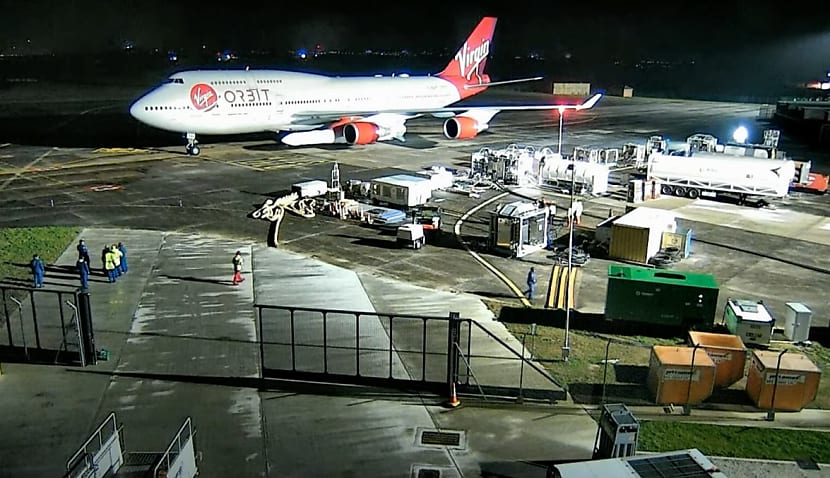Jones, who is also the founder of Australian airline Rex, said there’s “a lot of complexity that doesn’t appear to be there” and hinted traditional vertical blast-offs are more successful.
It comes days after Orbit finally admitted defeat in its battle to find a rescue deal and said it would cease all operations. It had been hoping to launch from Toowoomba in Queensland next year.
Jones has a unique insight into the blurring worlds of aviation as the founder of Rex, a former senior executive at Virgin Australia, and now chief of a spaceport business in the Northern Territory.
Speaking about the company’s demise, Jones said that if you launch rockets vertically and they don’t ignite, the projectile sits on the launchpad. But, if you drop it horizontally from an aircraft, “you’ve dropped a bomb”.
“There is a lot of complexity that doesn’t appear to be there. It sounds great, but it’s a challenging thing they’re doing.
“We track about 76 rocket companies globally. That’s a mixture of vertical, which is about 90 per cent of the market, and horizontal, which is a further 7 per cent. I think about 25 of those are ‘real’.
“And by that, I mean real in their financial capacity, technology, and having a business plan for a successful solution.” Of the 25 remaining in his system, he predicts only 11 will survive.
“Space is hard, and that’s a very high attrition rate. It’s not necessarily because people don’t have the right idea, but that there are significant challenges.”
Earlier this week, Virgin Orbit agreed to sell all of its assets, including its rocket-launching 747, to four winning bidders for just $36 million — barely 1 per cent of the company’s valuation in 2021.
Its demise followed the failure of its landmark launch in Cornwall, south-west England, failing in January. It had been targeting future launches in multiple countries, including Australia.
Virgin Orbit’s plan worked because the 747 has a little-known capacity to attach a fifth engine, enabling it to carry a rocket. After the satellites are fitted underneath the rocket’s nose, or fairing, the projectile is attached underneath the left wing of the Jumbo Jet. The aircraft takes off and cruises upwards to its launch position at around 35,000 feet.
“The pilot then pulls up on the 747 to a 30-degree angle because we want the rocket facing the right direction, and we want a bit of upward pitch,” Virgin Orbit chief executive officer Dan Hart told the Space Connect Podcast.
“The other pilot, at the right moment, pushes a button on the panel of the cockpit to release the rocket, which drops — or glides — for about four or five seconds until it’s safely able to start its engines.”
Seconds afterwards, the 747 banks right to stay clear of the rocket’s path.
Jones was speaking to Space Connect’s sister brand Australian Aviation in its latest print magazine. To find out more and subscribe, click here.

Adam Thorn
Adam is a journalist who has worked for more than 40 prestigious media brands in the UK and Australia. Since 2005, his varied career has included stints as a reporter, copy editor, feature writer and editor for publications as diverse as Fleet Street newspaper The Sunday Times, fashion bible Jones, media and marketing website Mumbrella as well as lifestyle magazines such as GQ, Woman’s Weekly, Men’s Health and Loaded. He joined Momentum Media in early 2020 and currently writes for Australian Aviation and World of Aviation.

